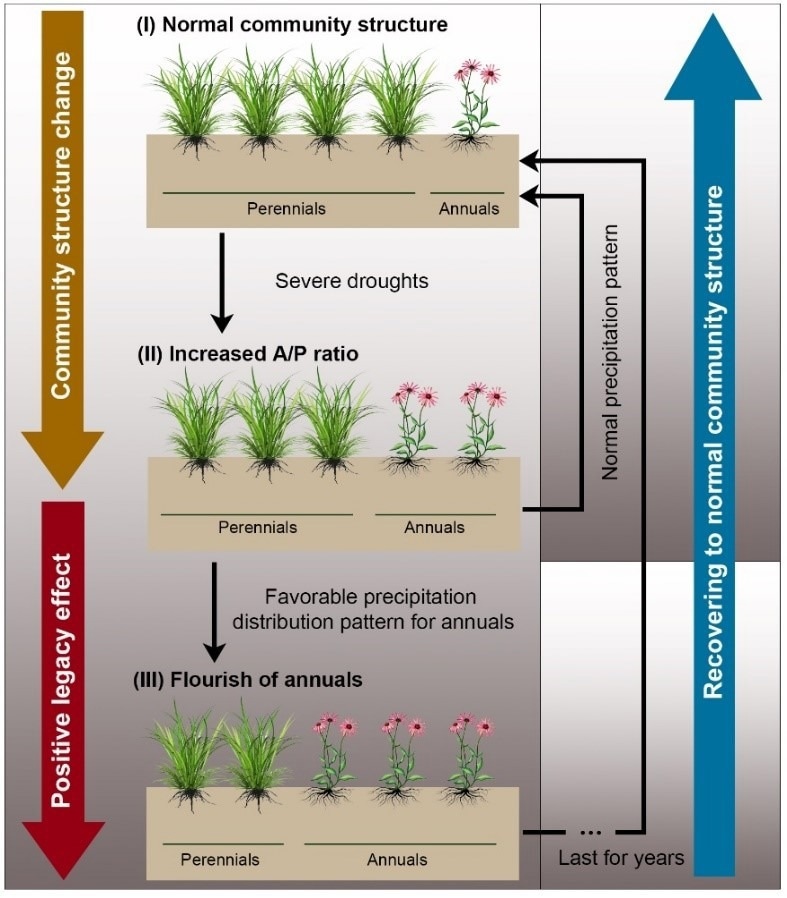Extreme droughts caused by climate change are becoming more common in grasslands around the world. Severe droughts not only affect current-year grassland productivity significantly, but they also have a long-term impact on productivity.
 Conceptual framework showing how drought-induced community structure change and subsequent-year precipitation pattern interactively drive a positive legacy effect. Image Credit: Qingmin Pan.
Conceptual framework showing how drought-induced community structure change and subsequent-year precipitation pattern interactively drive a positive legacy effect. Image Credit: Qingmin Pan.
Drought legacies can have a significant impact on grassland ecosystems’ responses to climate change. Severe droughts, in general, have a negative residual effect on grassland productivity due to meristematic tissue losses or plant mortality.
Using a four-year precipitation manipulation experiment and a 40-year observational study in the Inner Mongolia grassland, scientists from the Chinese Academy of Sciences’ Institute of Botany discovered that previous-year extreme droughts could leave significant positive legacies for current-year community productivity when drought treatments were discontinued.
This finding contradicted prior results that drought years had a detrimental legacy influence on community productivity.
The scientists, led by Prof. Qingmin Pan and Prof. Xingguo Han, found that the mechanism driving positive drought legacies was the combined effect of a drought-induced increase in annuals the previous year and an “early less, middle more” precipitation pattern that enabled annual flourishing in the prevailing year.
If this pattern persists for several years, the beneficial legacy effect will diminish.
In light of this, the researchers offered experimental and observational evidence that extreme drought-induced changes in community structure in the preceding year, as shown by a rise in the annuals/perennials ratio, along with a favorable precipitation pattern for the flourishing of annuals in the following years, could have large beneficial legacy effects on community productivity.
Positive legacy impacts on grassland productivity were discovered in more than one-third of the past 40 years in this investigation. Because global climate models forecast increasingly frequent drought extremes in grasslands around the world, these observations may have ramifications for comprehending the effects of extreme drought on grassland ecosystem functioning and services.
Since annuals are growing more abundant in a vast number of grazing grasslands throughout the world, drought-induced positive legacies in these systems are predicted to become more visible. Positive drought legacies in grasslands should thus be considered in models projecting ecosystem feedback in response to climate change.
The study was funded by the National Natural Science Foundation of China and the Strategic Priority Research Program of CAS.